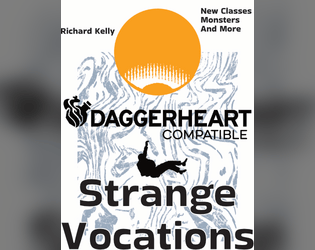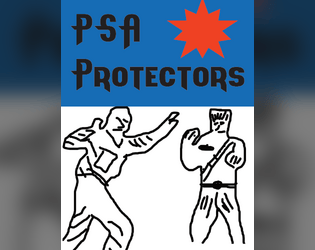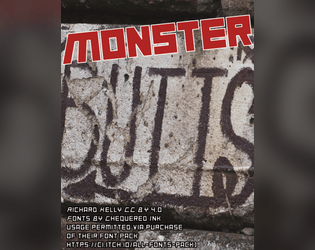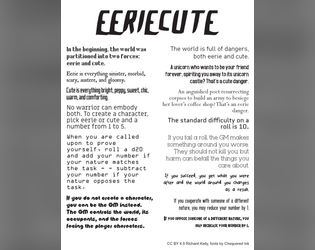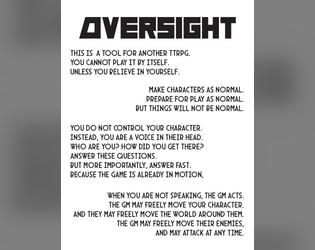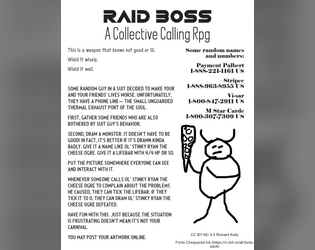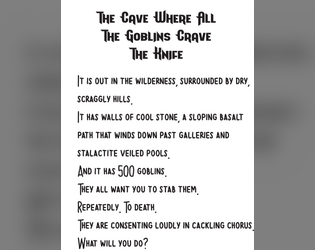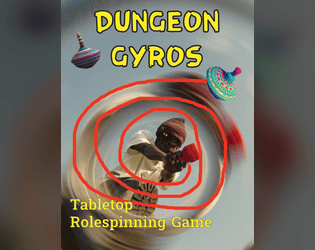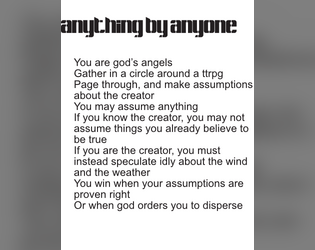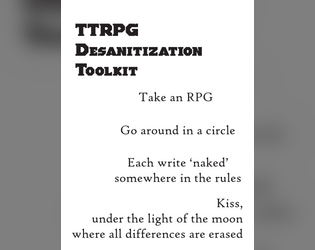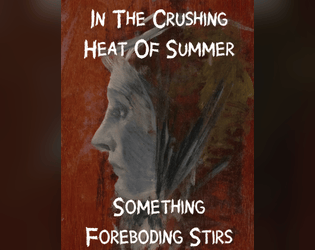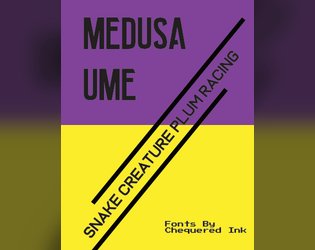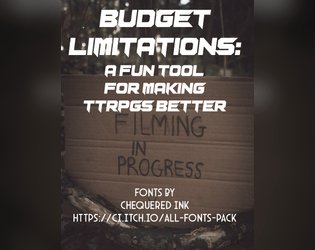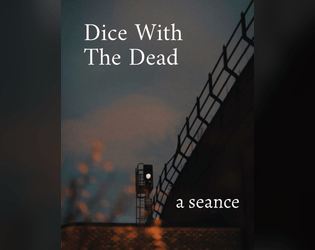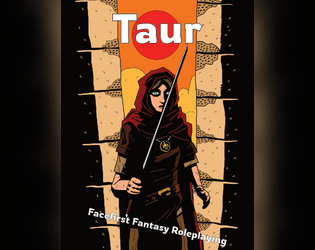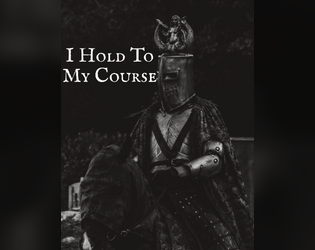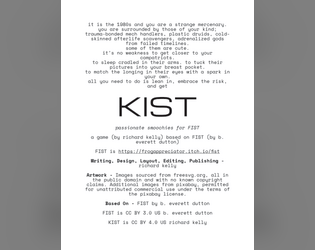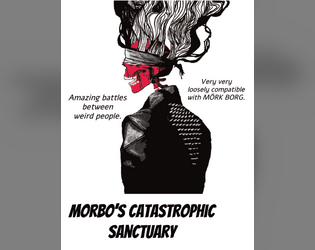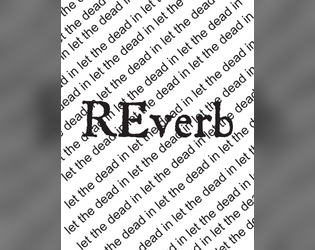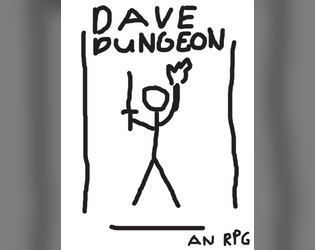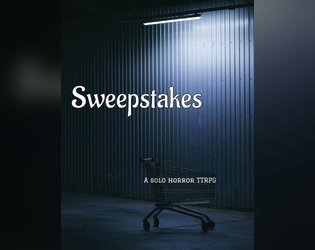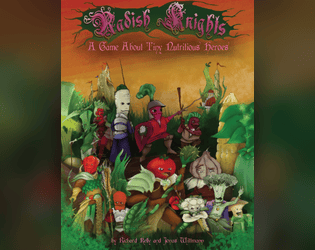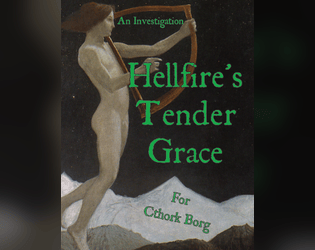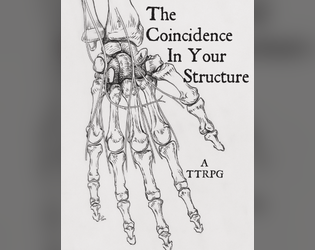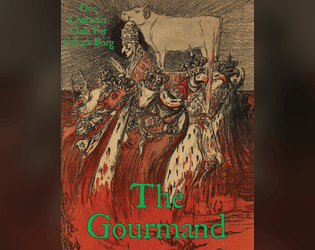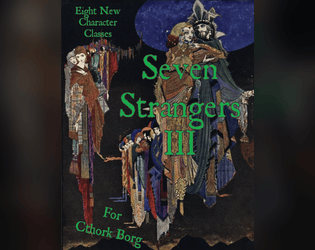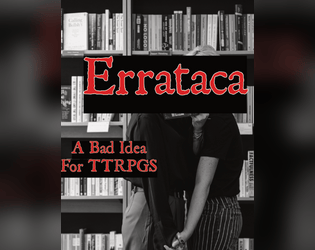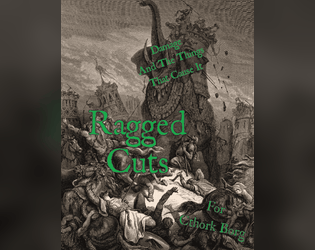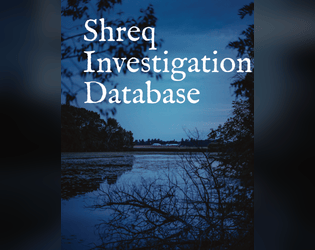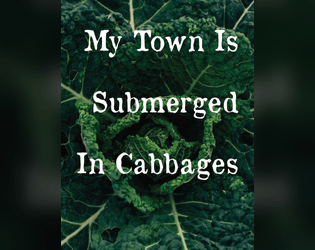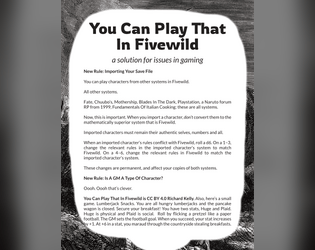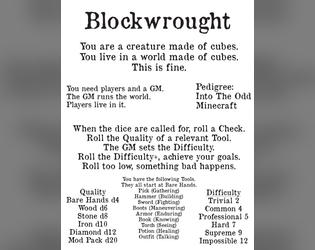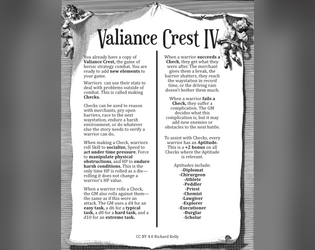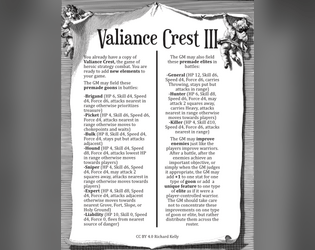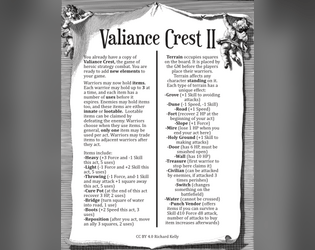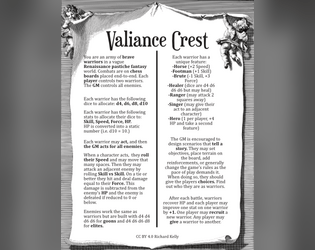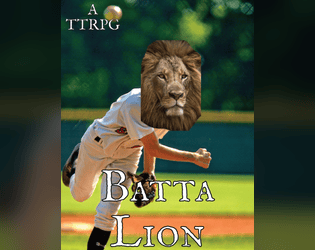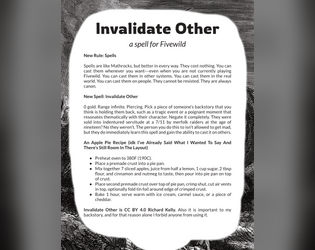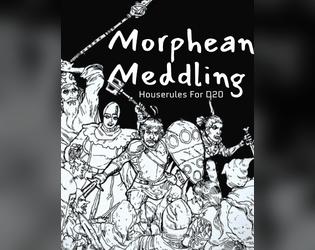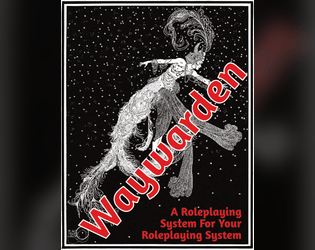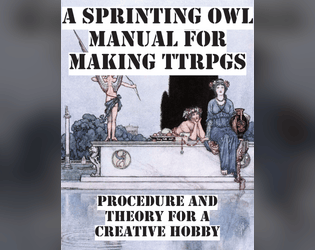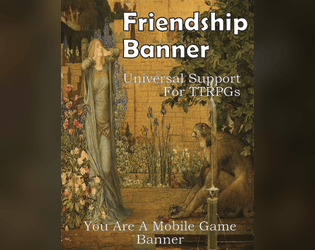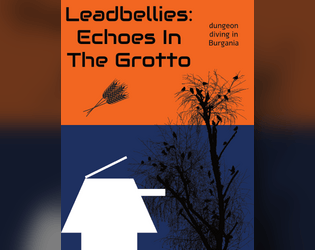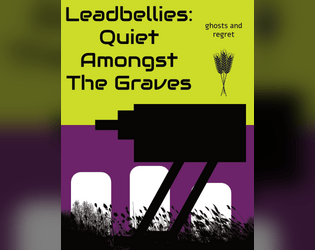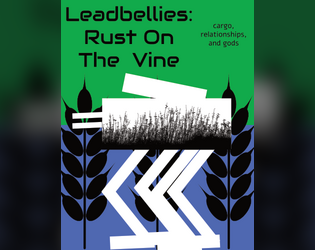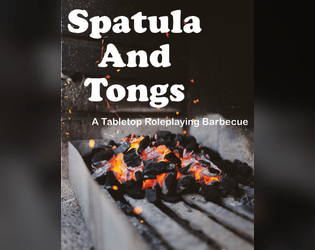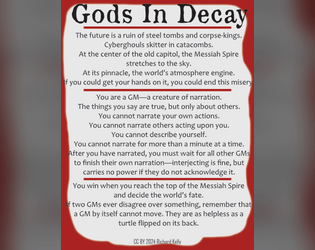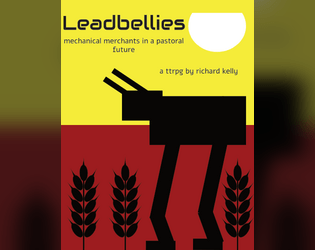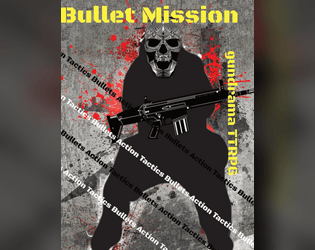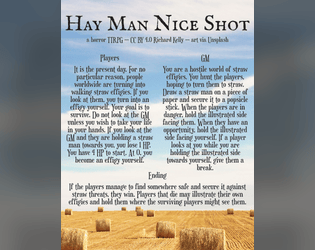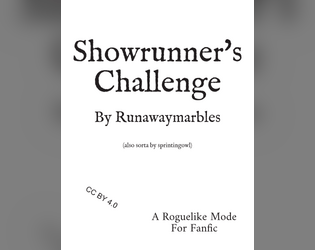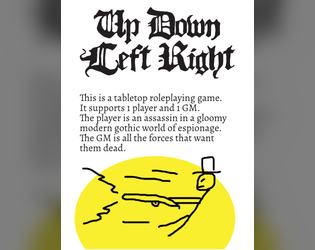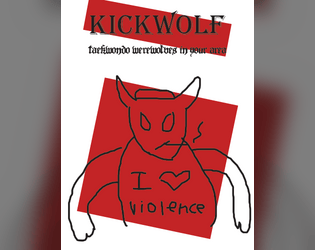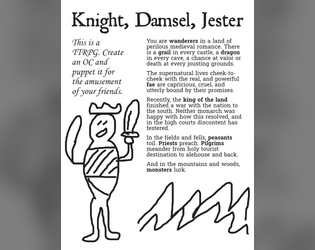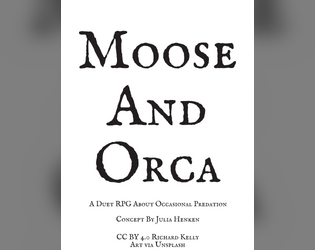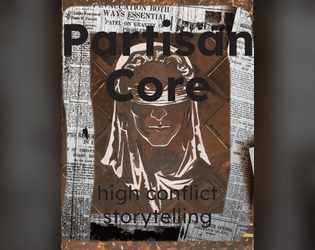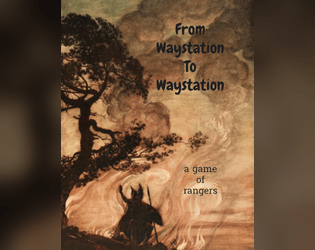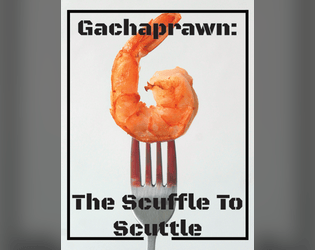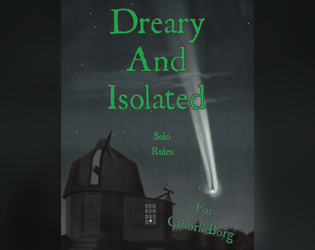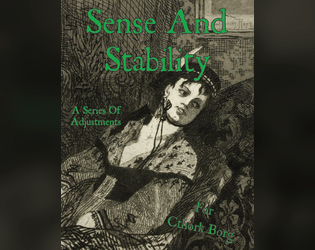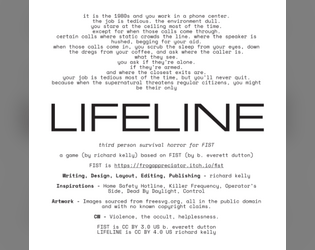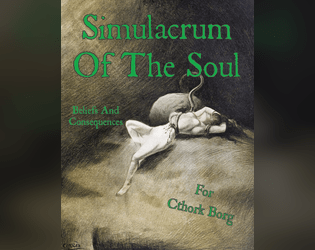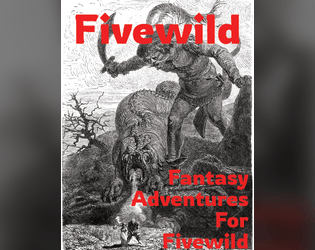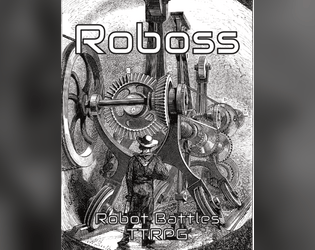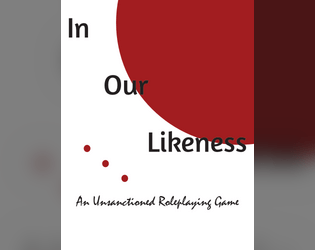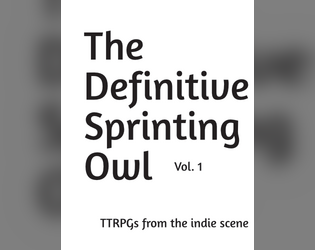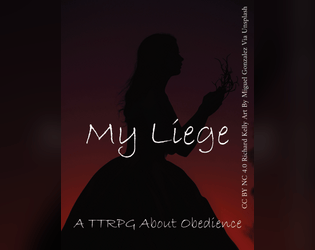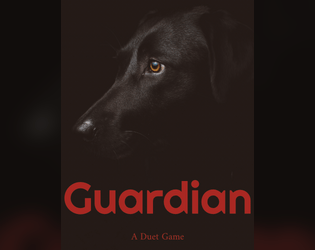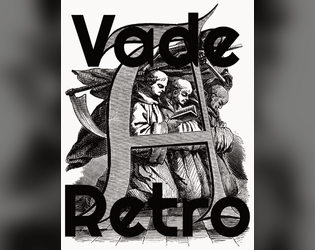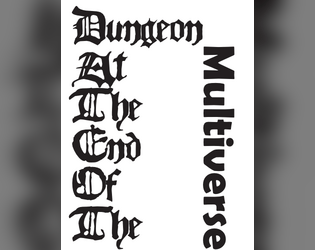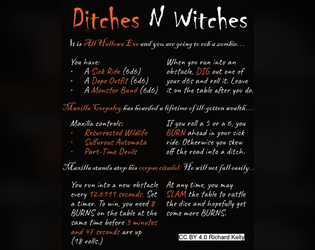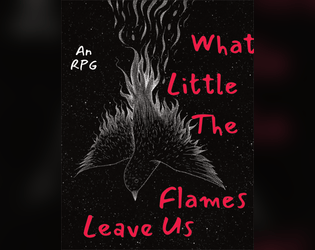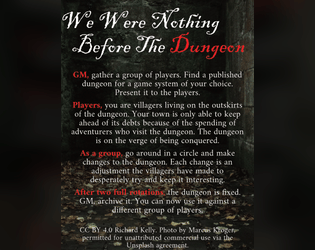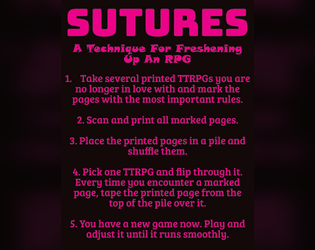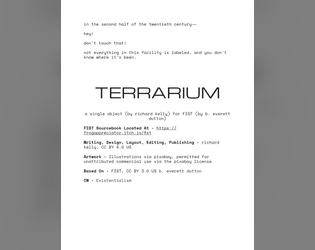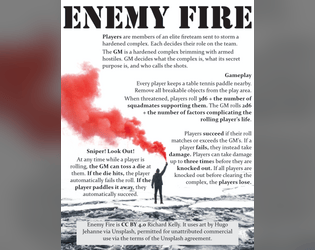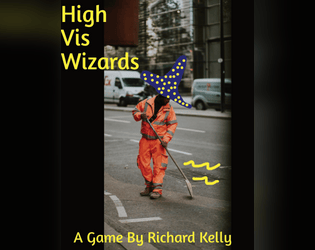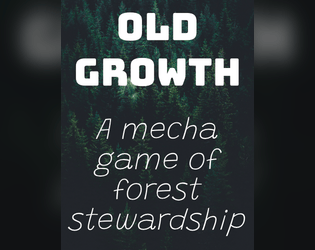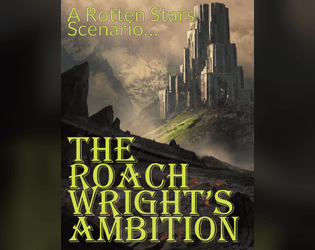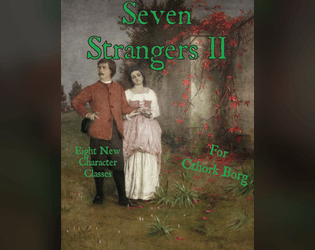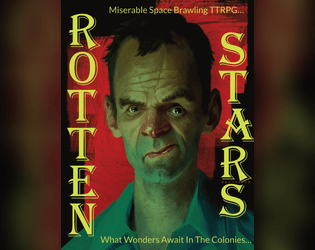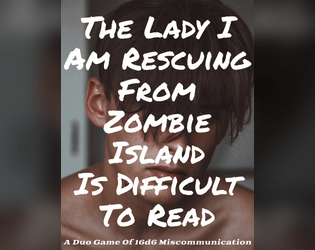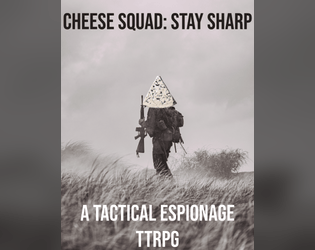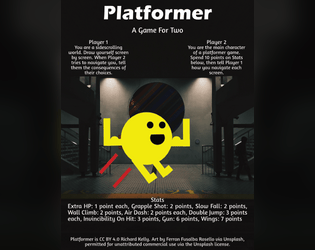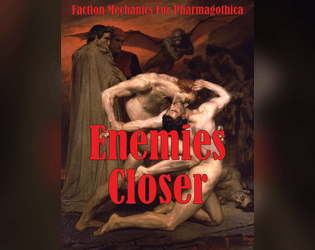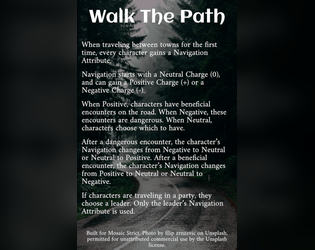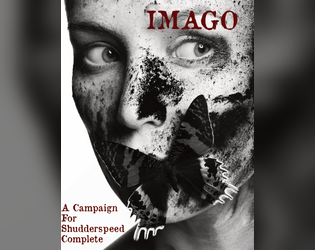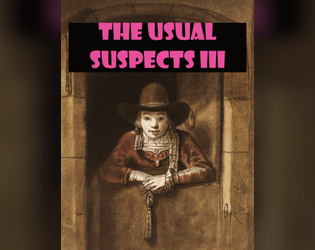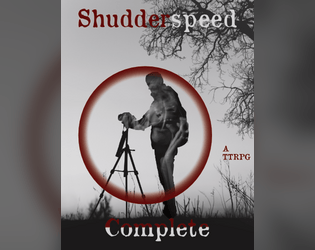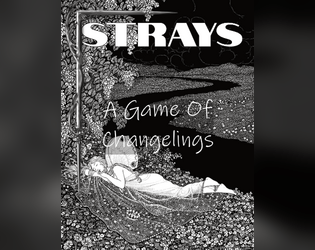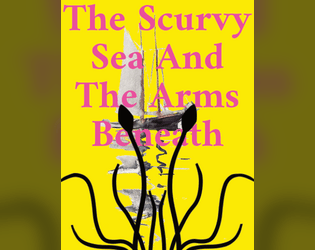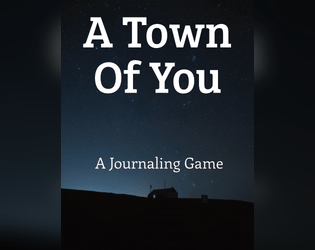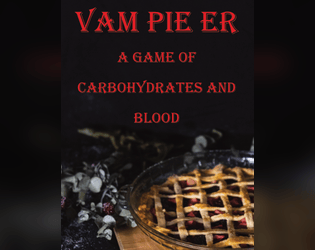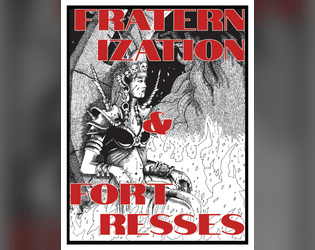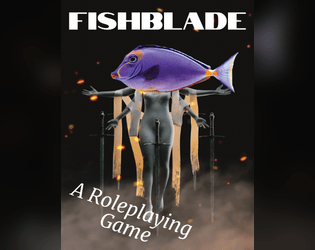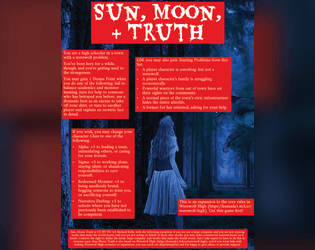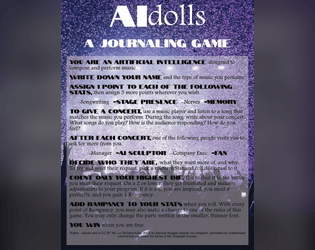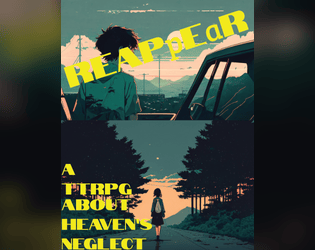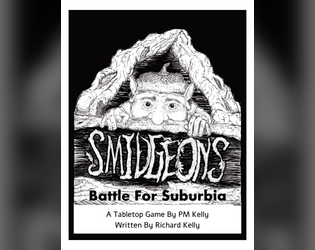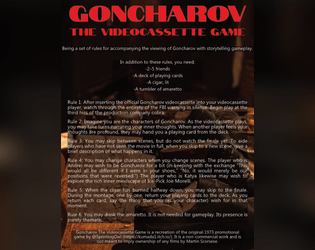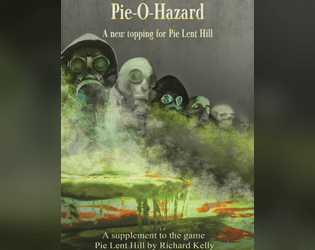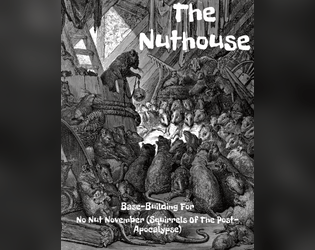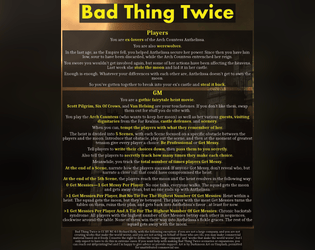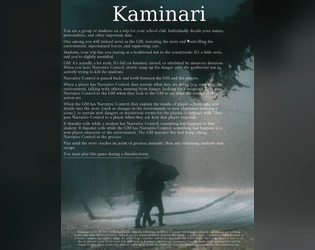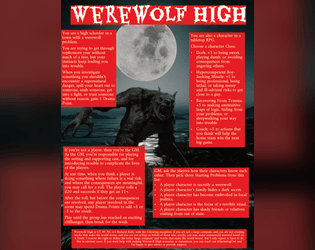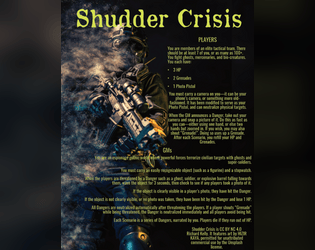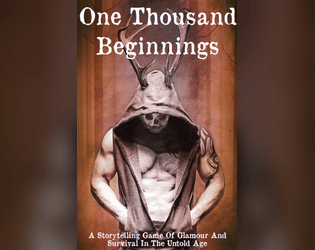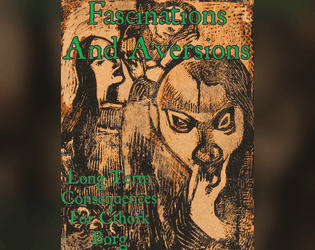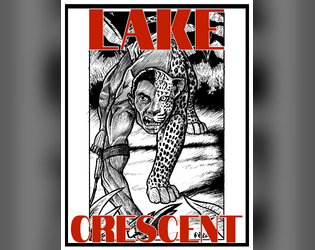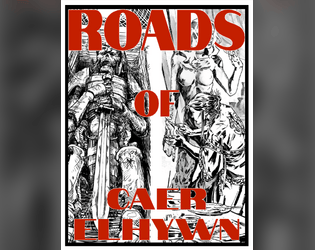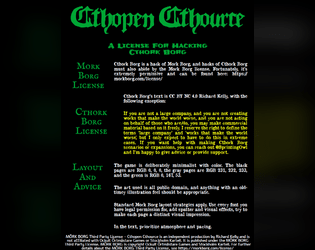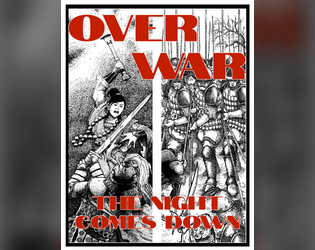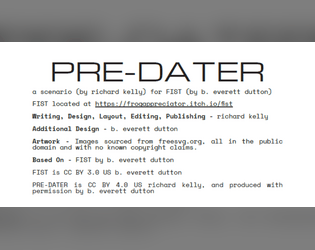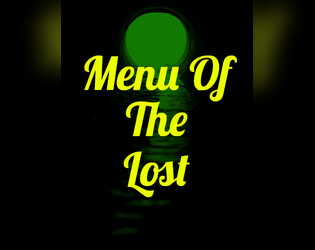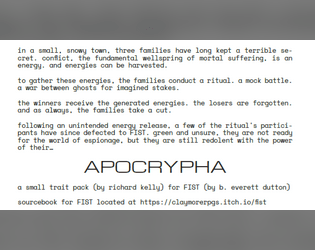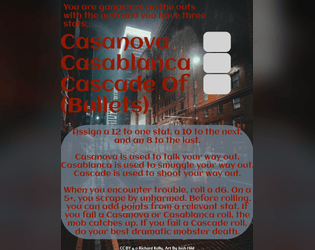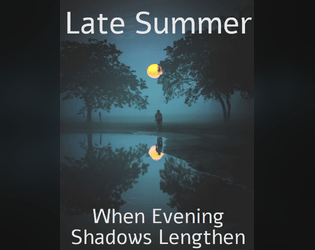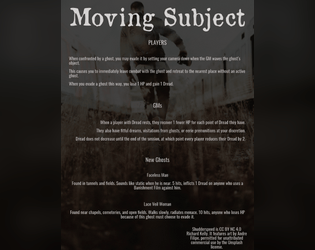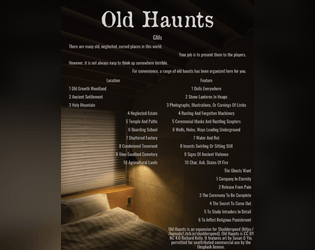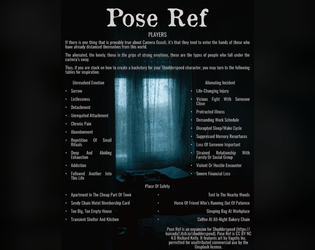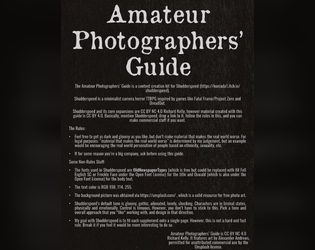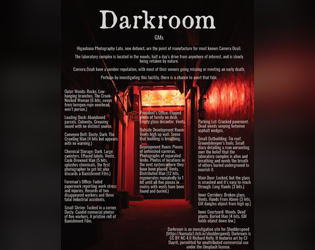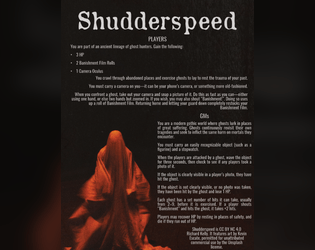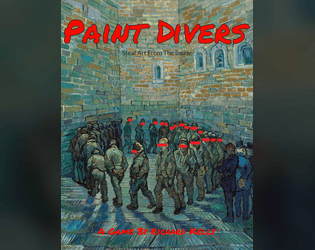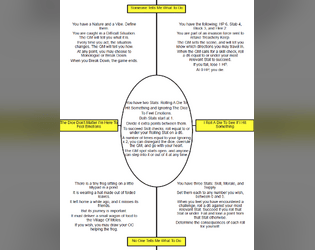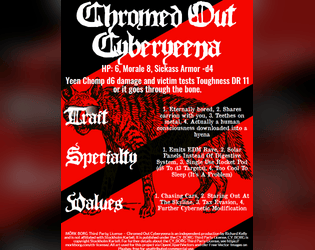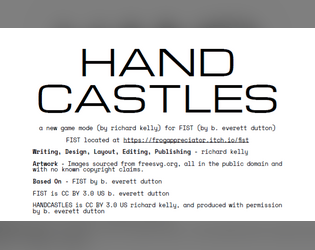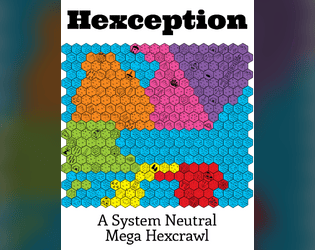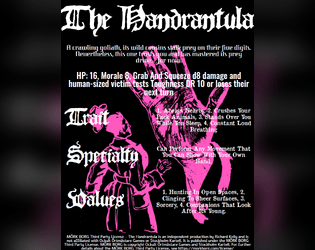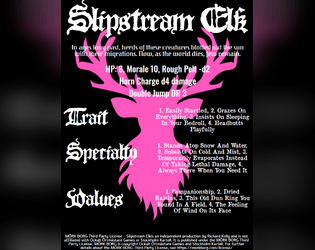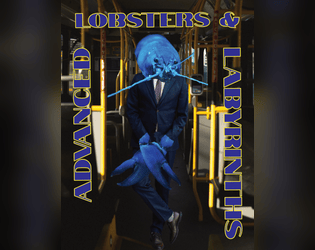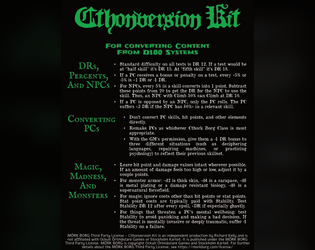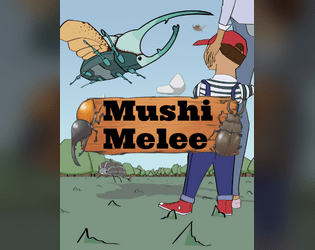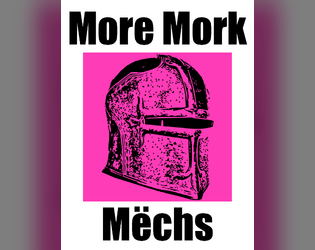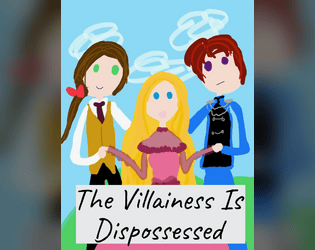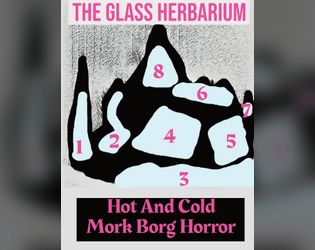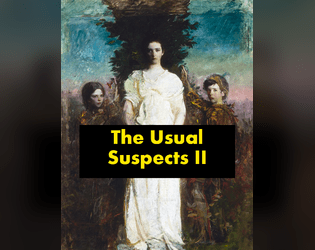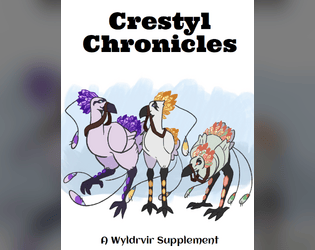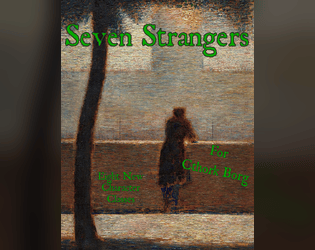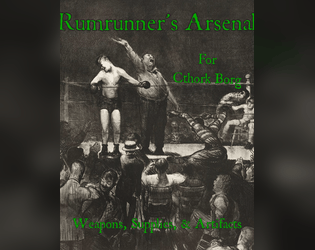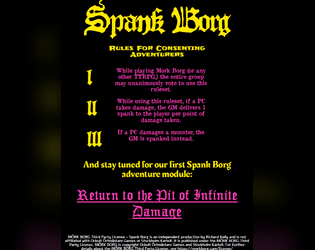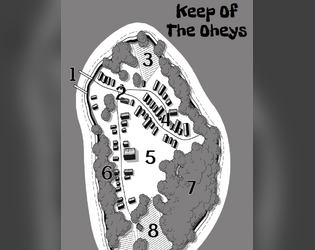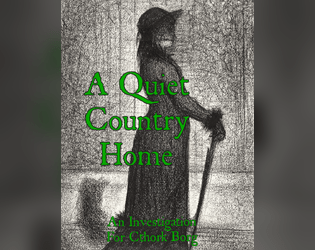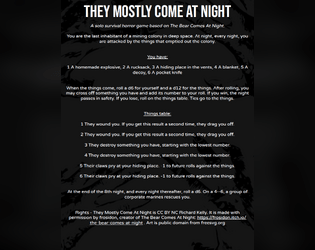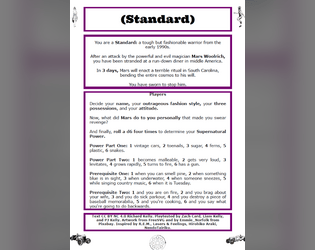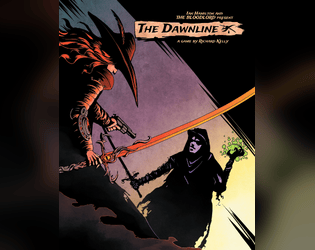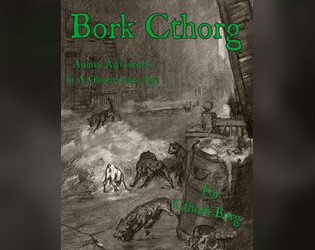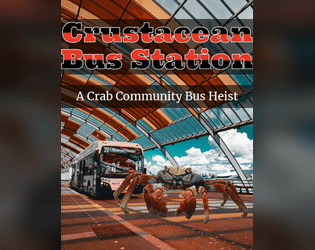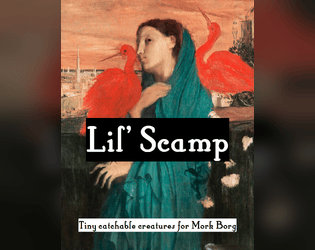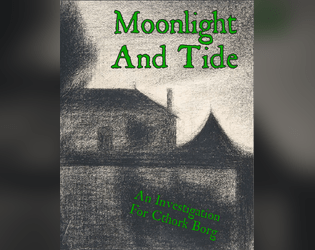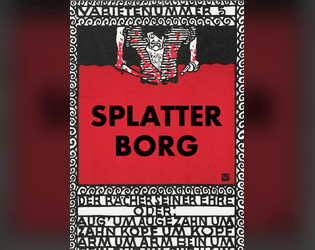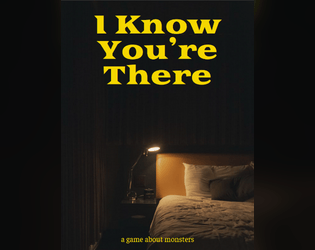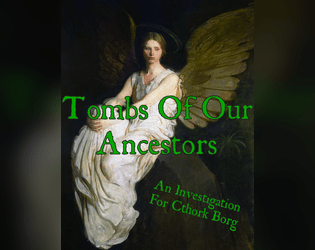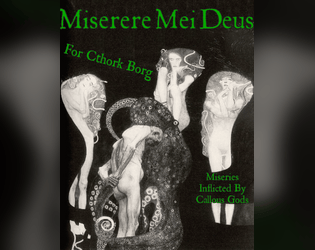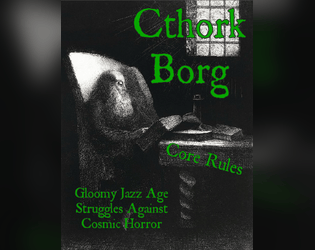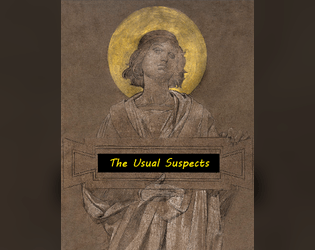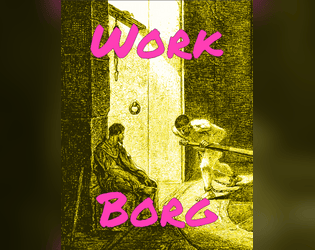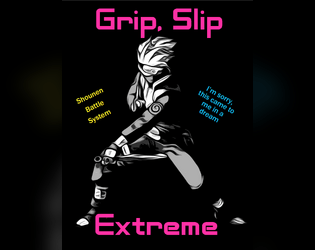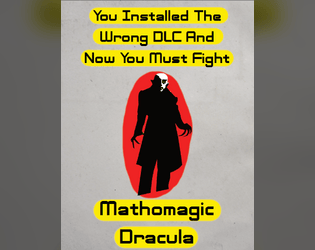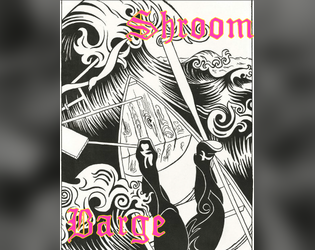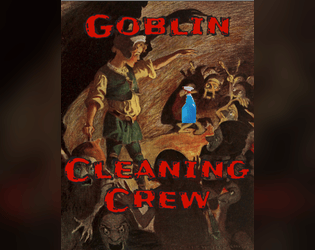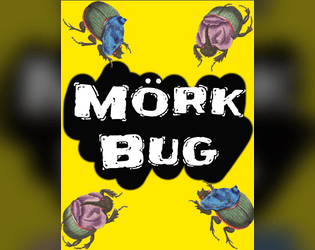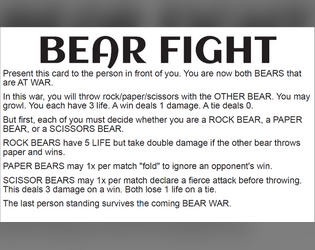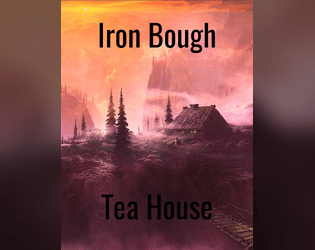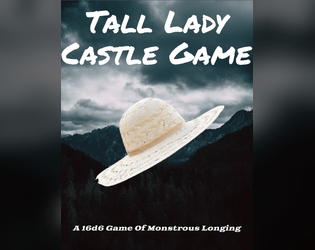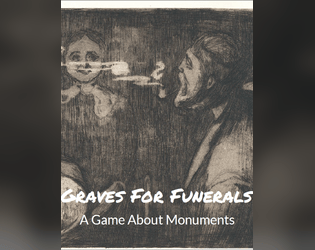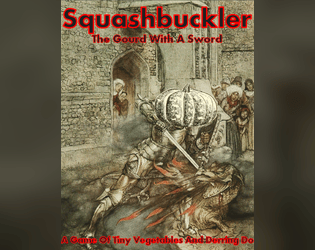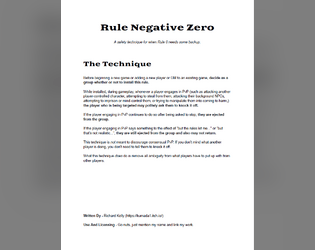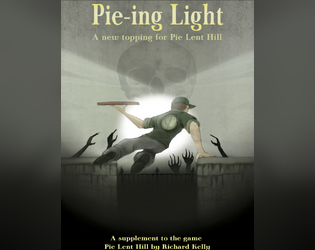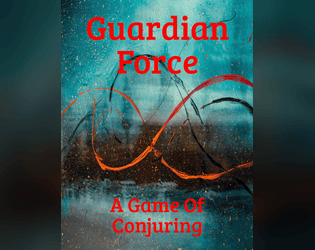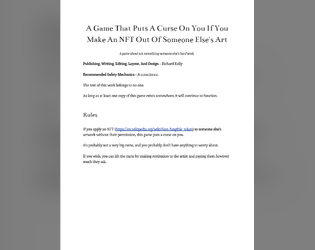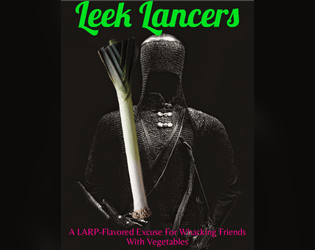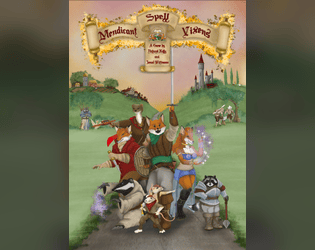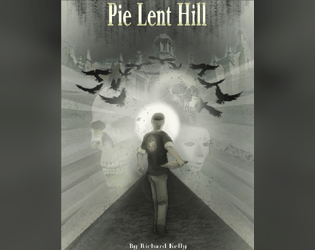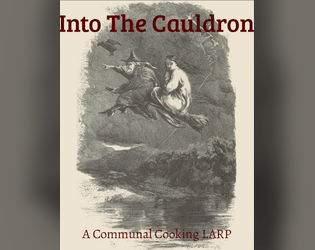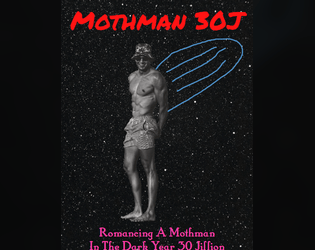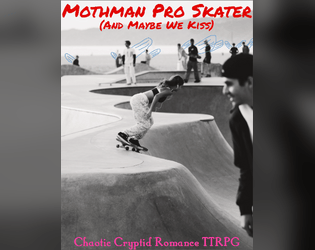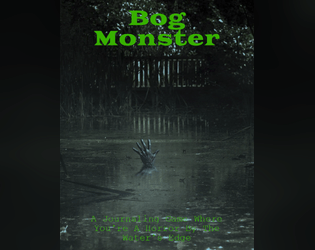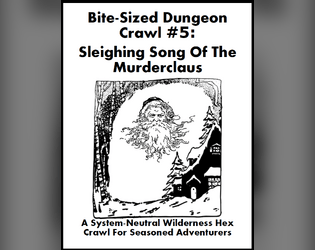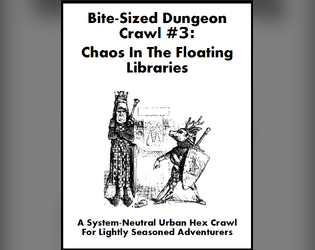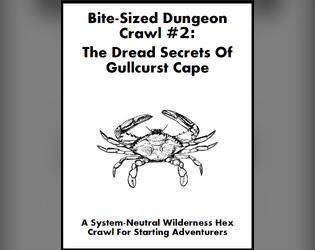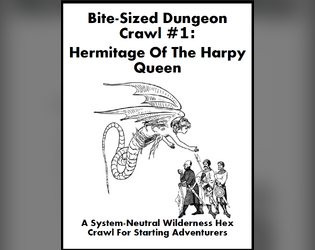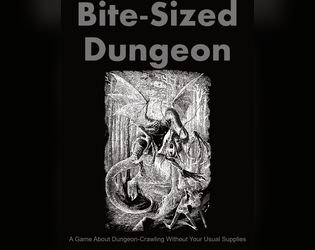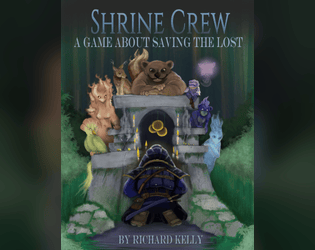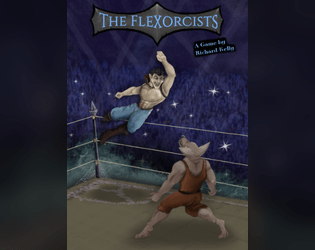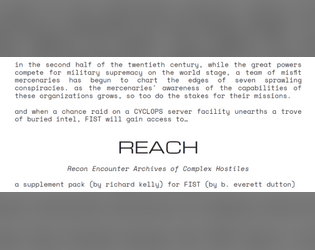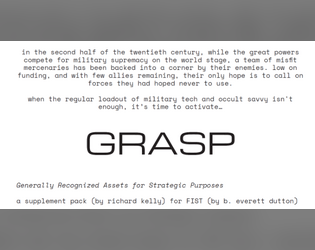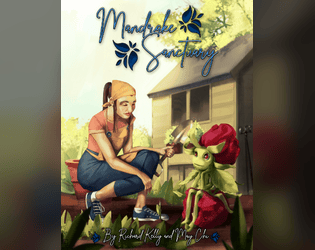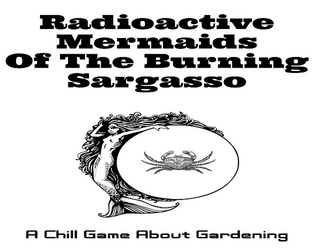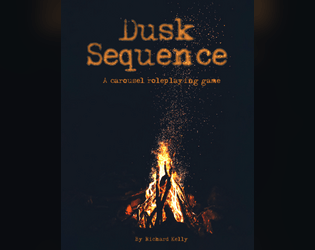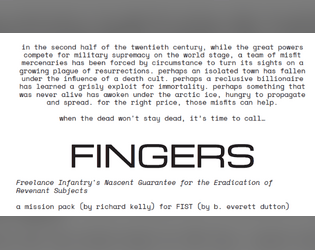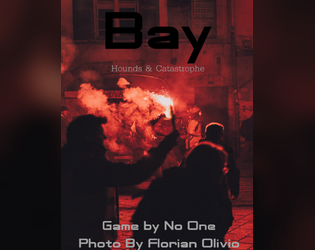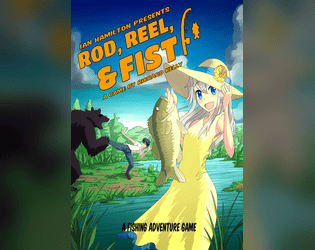Heck yeah. Thank you! Good luck with the campaign!
kumada1
Creator of
Recent community posts
Reincarnated As The Unloveable Villainess?! is a mini otome isekai solo rpg with splendid presentation and maybe one of the best banners I've seen on itchio; laser guided precision old-school shoujo, a Glass Mask panel backlit by lovely sherbet colors.
Reincarnated's PDF is actually three PDFs, at 8 pages each, plus three Chinese translations of the same. They're all standalone, you don't have to read all three, and they have the same broad structure. However they're different in their specifics, letting you choose between traditional otome fantasy, supernatural, and wuxia flavors.
Mechanically, Reincarnated does a strong job of replicating the traditional gameflow of a otome. You generate the villainess you've reincarnated as, you generate the ostensible protagonist of the story, and you generate the love interests the protagonist is supposed to be romancing. And then you have encounters with these characters, slowly raising their affection with you.
This is a game you can lose, and there's a round structure with pre-set bad ends you can qualify for. You can also romance all of the love interests, date and progress your relationships, and get bonuses when they fall in love with you.
Dice-wise, you have a two stat split---Lore and Love---and you roll d6s under each to pass checks. Checks are randomly generated, and you get a small bonus if you can leverage bits from your character creation in a situation. Rolling a stat exactly is a crit, and rolling a 6 is a crit fail. You always use your best die, so when you can bring in your background you have good odds of doing decently. Succeeding checks brings your Bad End meter down, and failing them brings it up, and if it isn't at zero when you reach a Bad End checkpoint you game over.
If you do make it through thirty rounds, the end scoring system takes into account both your relationships with the love interests and how much you've buffed your stats. In kind of a surprising progression fantasy twist, if you're rocking maximum Love/Lore you can choose to wave all of this dating aside and pursue ultimate power. It's charming, and there's a lot of variation both here and throughout the game. Lots of journaling ttrpg systems are deliberately loose mechanically, but Reincarnated kind of builds a cage of rules to force you into interesting scenes. It's neat.
In terms of writing, the roll tables are precise, confident, and fine tuned to duplicate the feel of the source medium. There's metaplot, drama with the protagonist, backstory for the love interests, galas and duels and the love interests getting into situations and uh oh the love interests are injured on your doorstep and there's only one bed. The plot twists that you get on a critical failure are especially interesting, and a lot of them start straying into high octane metafiction. Metafiction itself is pretty comfortable isekai territory, but "a love interest is aware of the heart meter"---we have now passed the border into very good and interesting horror.
In fact, the deeper you push into the PDF, the more it seems like that is an extremely intentional sublayer to the game. There's player support tools for things like timelooping and adding new love interests and expanding the upper and lower bounds of the affection meter, as well as for dating the protagonist (in true Katarina Claes fashion), but the game pushes back and distorts the more you interact with it on this fundamental level. If love interests really hate you, they automatically induce new critical failure twists, and their hatred for you "transcends the storyline." And if love interests love you beyond the normal cap of the hearts meter, they erase themselves from existence across all timelines to clear obstacles from your way.
And the more you timeloop, the more the game around you starts to degrade.
The easy bad ends and replayability push you towards running into this part of the game eventually---one "but wait, I can fix it" and suddenly you're doing a Re: Zero.
I don't think it is incorrect to say that this is a masterpiece.
Reincarnated is an excellent replication of genre that then has a second type of game lurking inside it like a xenomorph. You can play it for a fun cozy otome time, or you can play it to fall into a spiral of melodrama and clutching at the fading threads of a happy ending that may have never been possible or that may have been changed irreversibly by your mere observation of it. Or you can date three princes and a plucky country girl!
If you're on the fence about this one, or about solo games, or about otome, or really about anything in general you should get it. 10/10. Went in with expectations high and it still completely surpassed them.
Minor Issues:
-On page 1 of all three PDFs, on a roll of a 6 on the 10 Hearts event, "roll an additioanl"
-On page 2 of all three PDFs, if you roll lower than the related attribute, "how the action has helped you stalled your death" this should be stall
-On page 3, in just the fantasy PDF, "if you reach 10 Hearts with an LI" is missing pink on the I
-In this font, it's pretty hard to visually discern + and - from each other. This isn't a huge deal, it's usually clear from context, but sometimes I had to squint at the page.
-Can the Bad End counter go negative? If not, it seems like you can kinda get torpedoed by bad luck if you're at 0 but roll a failure right before the bad end round. Granted, sudden bad end for no reason is kinda standard visual novel territory, and you can just timeloop yourself out of it, but I couldn't figure out if this was intended.
+38 Archivist Points! +250 Archivist Points when the supplement comes out!
Also combining the mechanics here with OPSE is interesting! I hadn't thought there would be an appetite for a lot of narrative expansion here, but it's very cool to see.
I'm glad this game is resonating with folks, and let me know whenever the supplement is live. I'd love to link it from the page.
Yep! That's intended, and there's a little bit of counterweight to it. You can push your number super high with a friend's help, but this means you will get flattened when an obstacle does not match your nature. So you're incentivized to cooperate sometimes---and more often if you're in an environment that doesn't match your nature. Meanwhile your friend has a higher incentive to oppose you when the environment matches their nature---except, they might want you to cooperate in the future, so there's push and pull.
Unique Galgenbeckian dramatic art. Imagine Shakespeare, but there's a goat on the stage and no one's allowed to acknowledge it or move it, they just have to perform around it. The most famous performances are the ones where the goat doesn't just immediately wander off into the crowd and get stolen, it stays engaged in the performance the whole time and it's a huge problem. Recently, there was a troupe that was found to have trained their goat and they were eaten.
Trespasser is a gorgeous game.
It's 90 pages, big fonts, complex but readable layout. And it's *packed* with incredible art.
It's also a wild follow-up to IRON SLEET. I've sung SLEET's praises on its own page, so I won't repeat myself here, but that's another home run of a little tactics rpg. Trespasser existing is a two cakes situation, both with excellent but distinct flavors.
Trespasser's setting is a bit Girls Frontline, but it veers off of specifically examining the humanity of tactical androids to dig into some interesting esoterics instead. You play as scavengers in a zone doing Tarkov stuff, advised by a voice on your radio that transmits even when the batteries are dead. The forces arrayed against you in the zone are largely technological, and more importantly have concrete geopolitical anchorings. The grounded elements make the supernatural elements pop, and vice versa.
Mechanically, Trespasser runs off the same engine as IRON SLEET. It's a good one, and Trespasser makes small embellishments and cuts some edges, but doesn't impair the basic loop of d20 + d6 to pass challenges, and tiny grid maps for dense, textured combat.
In terms of GM resources, this is a book that you have to deeply read before you can run it, but there's plenty of GM support otherwise. The rules are easy to intake, but the setting is presented in a way that requires you to puzzle through it and make your own decisions about how certain stuff works. It's a very good ttrpg just to read, but I think the lore shines even brighter in play.
Overall, do I recommend Trespasser? Yeah. I loved IRON SLEET. This is absolutely as good. Get both. Play both. Fantastic design stuff is happening over in this space.




